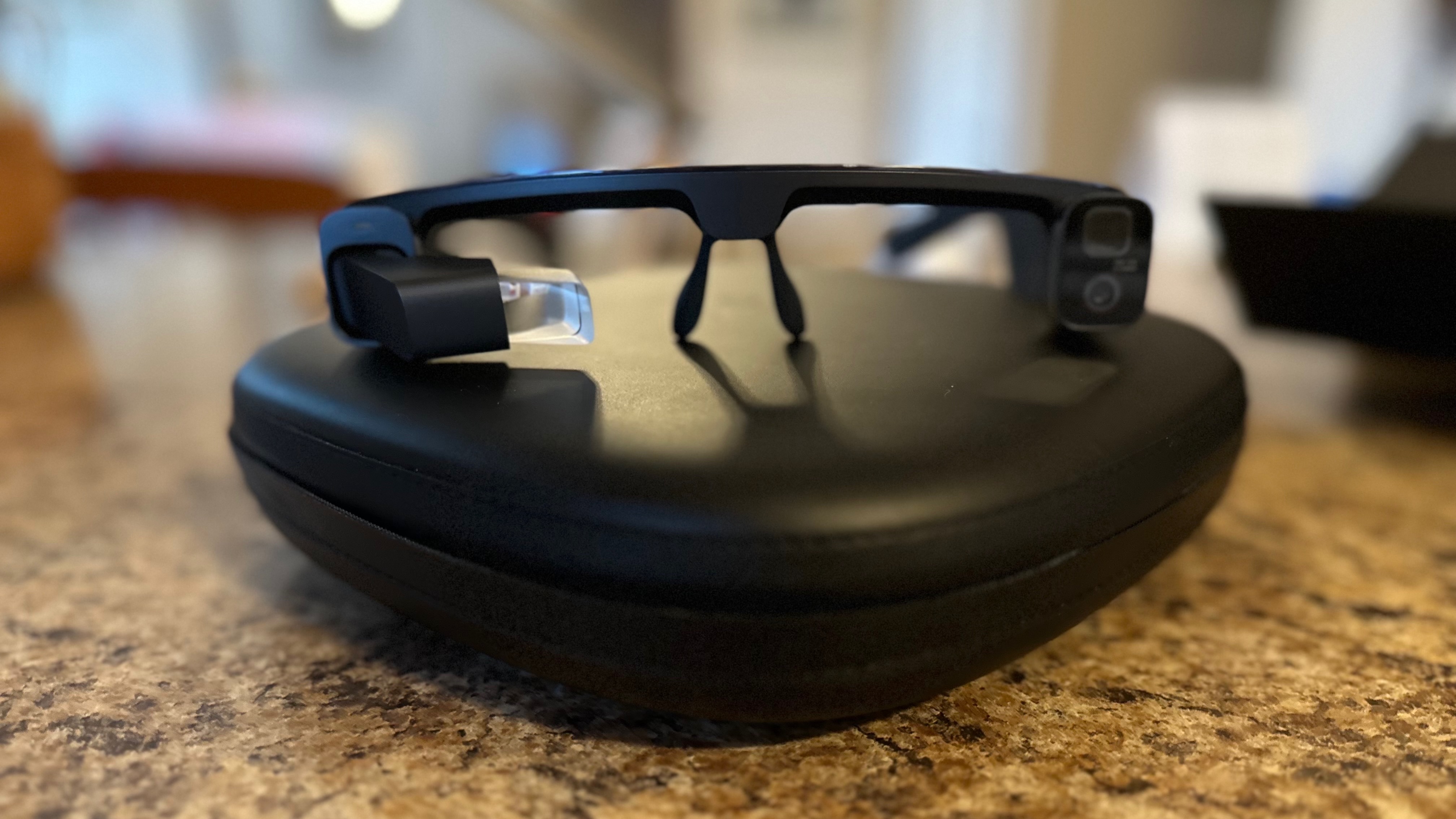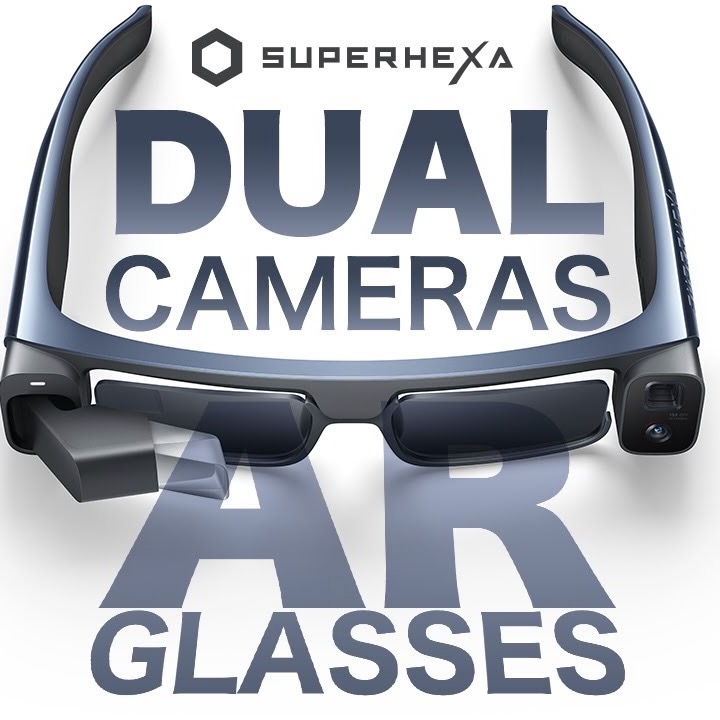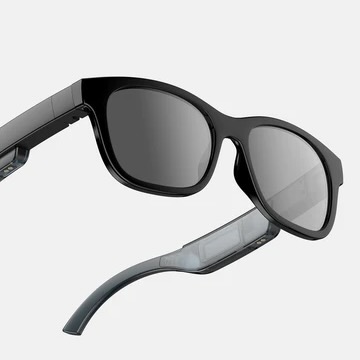Apple AR glasses are coming — but today's smart glasses can tell us why they need to do better
Apple needs to make its AR/VR headset smart, maybe even more than smart.

Ever since Google Glass arrived (and eventually died), inventors big and small have tried to release a successful pair of "smart" glasses. I've tested many of these over the years. Unfortunately, none have kept my interest for long. There are many reasons current (and former) smart glasses have failed. However, my experience tells me that the biggest turnoffs are the high prices, the lack of comfort, and a weak feature list many include.
Recently, I received two new pairs of smart glasses that I'm currently putting through the testing process. As I do, the long-rumored Apple AR headset is never far from my mind. Although we still know very little about the product, which Apple should launch in 2023, rumors suggest the headset will focus heavily on gaming and entertainment and compete with the Meta Quest Pro and similar devices.
That's probably the right way to go and give Apple the best chance of quickly making its mark in a relatively new consumer market. But, to achieve long-term success with its AR/VR headset, Apple will have to do an excellent job on the three points mentioned above.
What Apple can learn
The two smart glasses I'm reviewing have not been designed to compete with Apple's AR/VR product. However, they do have a lot of things I hope Apple duplicates.
Despite its name, the SUPERHEXA VISION AR doesn't include gaming capabilities as it focuses nearly exclusively on photo-taking. Meanwhile, the LeMuna Myth is a wearable audio device.
The SUPERHEXA VISION AR, with wide (50MP) and telephoto (8MP) cameras, is perhaps the most remarkable of the two devices because of its ease of use and impressive internals. The dual-camera AR glasses include a Sony micro OLED display with 1800 nits Peak Perceived Brightness and 15x hybrid zoom. Inside is a zippy Qualcomm Snapdragon 8 Core CPU.
With the glasses, you can take photos and videos using the touchpad built into the right arm. In addition, an AR optical display lets you see zoom movement and other prompts from your right eye.
iMore offers spot-on advice and guidance from our team of experts, with decades of Apple device experience to lean on. Learn more with iMore!
The result is something like this:

The SUPERHEXA VISION AR is a self-contained product with 32GB of memory, so you don't need one of the best iPhones to use it. Once you're finished recording, you can bring your photos and videos to your smartphone using Bluetooth and the SUPERHEXA VISION AR app.
Many smart glasses and headsets released over the years have failed to consider prescription glass wearers, but not the SUPERHEXA VISION AR. There's no physical barrier in front of your eyes, so it works with or without specs. You can also use the included snap-on shades, which look nice, but don't contain UV protection. But again, if you have prescription shades, no problem.
The SUPERHEXA VISION AR has been successfully funded through Indiegogo. On that page, the retail price is $700, although you can purchase a pair for as little as $400. The fuller-featured Meta Quest 2 is $400, while the Meta Quest Pro is $1,599. I'd suggest $700 is too much for the SUPERHEXA VISION AR, given its limited (but excellent) features, with $400 feeling more like its sweet spot.

Shifting gears, the LeMuna Myth is an entirely different beast. Promising an "enhanced audio-visual experience," the glasses look like traditional ones for everyday, all-the-time use. So much so that you can purchase a pair with a prescription for just an extra $100. My review unit came with the prescription I provided and feels like any other eyeglasses.
Offering 12 hours of playtime between charges, LeMuna Myth uses Bluetooth to connect to your iPhone or another device. From there, you can play music, listen to podcasts, and watch videos, just as you can with headphones.
I'm not convinced most people have a use for audio glasses, although a critical point with the LeMuna Myth stands out. Although noise-cancelation and transparency are all the rage these days for earbuds and headphones, this level of immersion might not be welcomed in every situation.
Specifically, I have enjoyed using my LeMuna Myth the most during dog walks around my neighborhood. Thanks to its Perceptual Audio, the sound is crisp and clear, allowing me to focus more on my surroundings while still enjoying my favorite podcasts and music. They also work great when taking a call. I can also use these glasses at sporting events when listening to a play-by-play through a streaming app.
The LeMuna Myth is $129 and $229 with a prescription. It also has an interchangeable pair of shades, although there's no prescription here. These price points sound about right, especially for prescription users.
What Apple can learn
Understanding that Apple isn't likely to release smart glasses but rather a smart headset, there are a few things the company could learn from both the SUPERHEXA VISION AR and LeMuna Myth. First, comfort is king. If you expect someone to wear a product that sits on your head while covering the eyes, it has to feel good— for long periods. The lack of comfort is one of the reasons I quickly grew tired of my Meta Quest 2 and sold it online.
Price is also important. Although Apple would be justified in pricing its AR/VR headset in the same neighborhood as the Meta Quest Pro, it's probably best not to do so. Before the Apple Watch Ultra launched, most expected the "Apple Watch Pro" to get a price tag of $1,000 or more. When the new Watch came in at $799, people were even more excited about it, and no doubt, Apple sold a lot more units. The company should also be aggressive when pricing its AR/VR headset. We're expecting a high price point because of what Meta did, but Apple doesn't have to follow its lead.
Finally, Apple needs to bring the AR/VR headset to market with a long list of features that expand beyond gaming, including impressive audio integration, an excellent camera system, and the ability to purchase a pair with a prescription. Otherwise, the company will leave a lot of would-be buyers on the sidelines.
I plan to continue using the SUPERHEXA VISION AR and LeMuna Myth and publish reviews in the coming weeks. Stay tuned.

Bryan M. Wolfe has written about technology for over a decade on various websites, including TechRadar, AppAdvice, and many more. Before this, he worked in the technology field across different industries, including healthcare and education. He’s currently iMore’s lead on all things Mac and macOS, although he also loves covering iPhone, iPad, and Apple Watch. Bryan enjoys watching his favorite sports teams, traveling, and driving around his teenage daughter to her latest stage show, audition, or school event in his spare time. He also keeps busy walking his black and white cocker spaniel, Izzy, and trying new coffees and liquid grapes.


